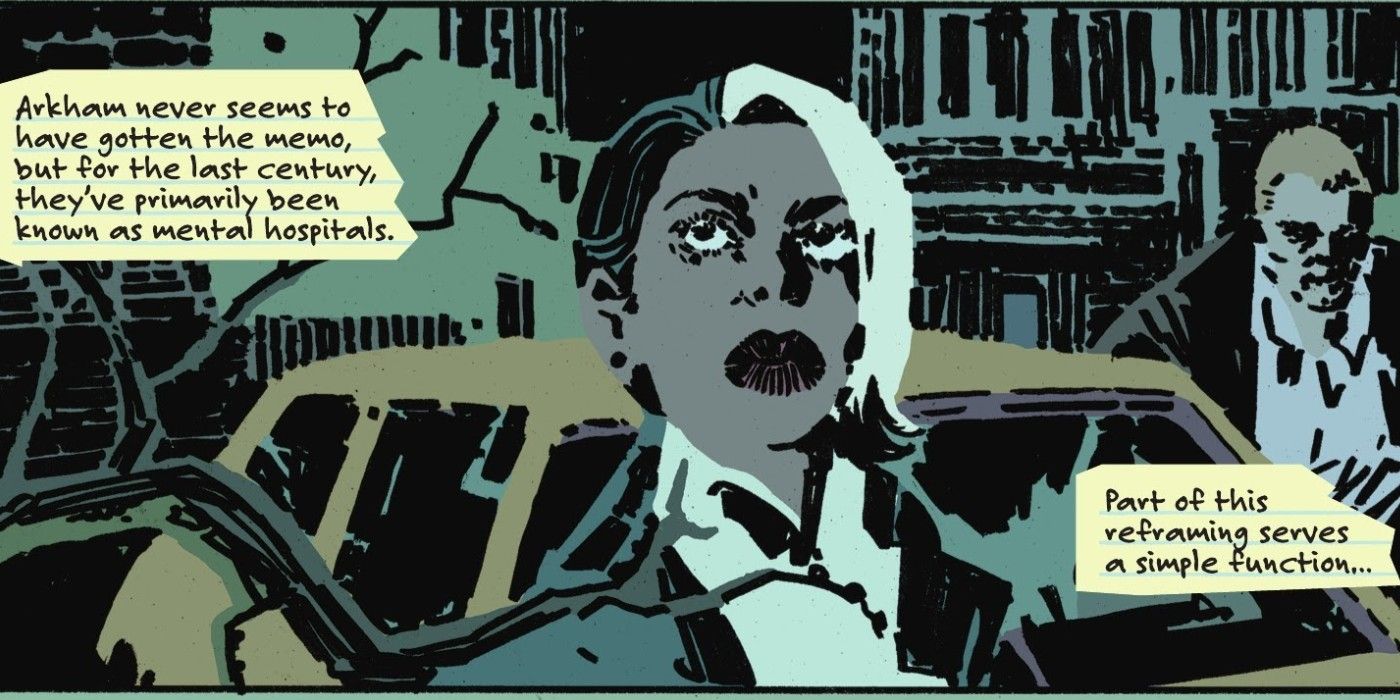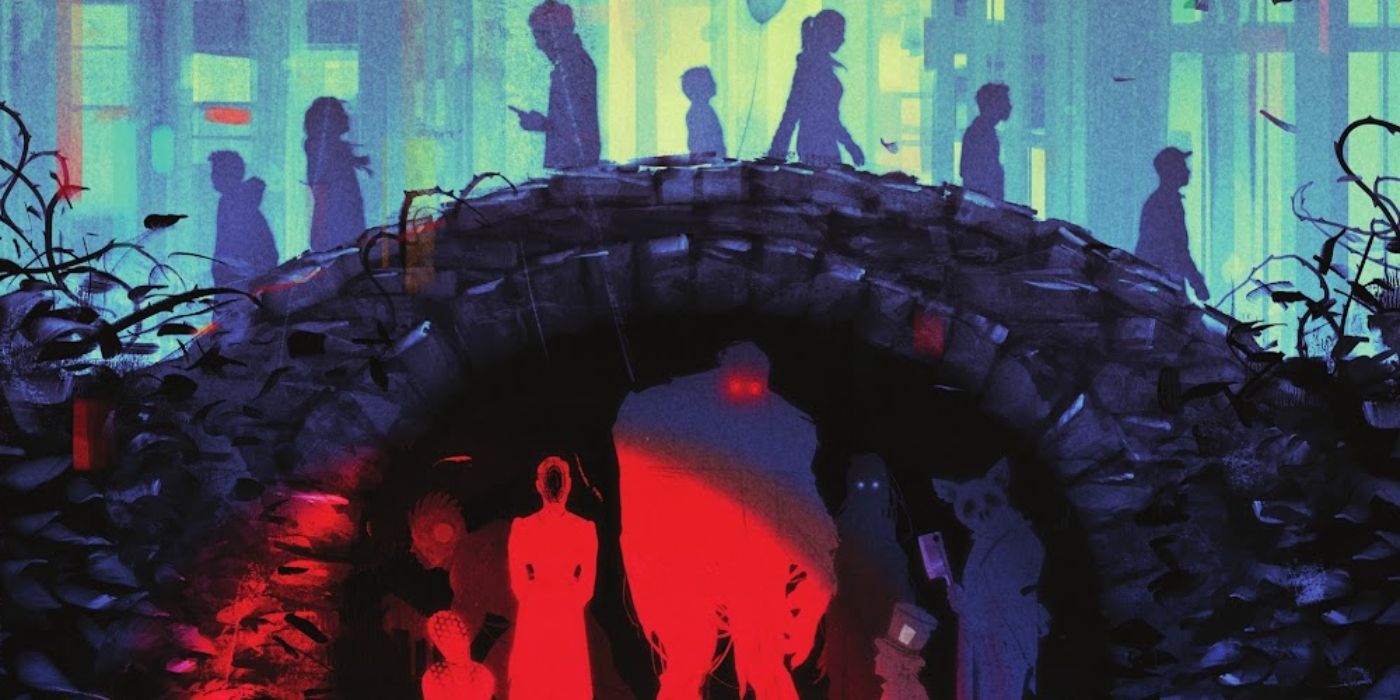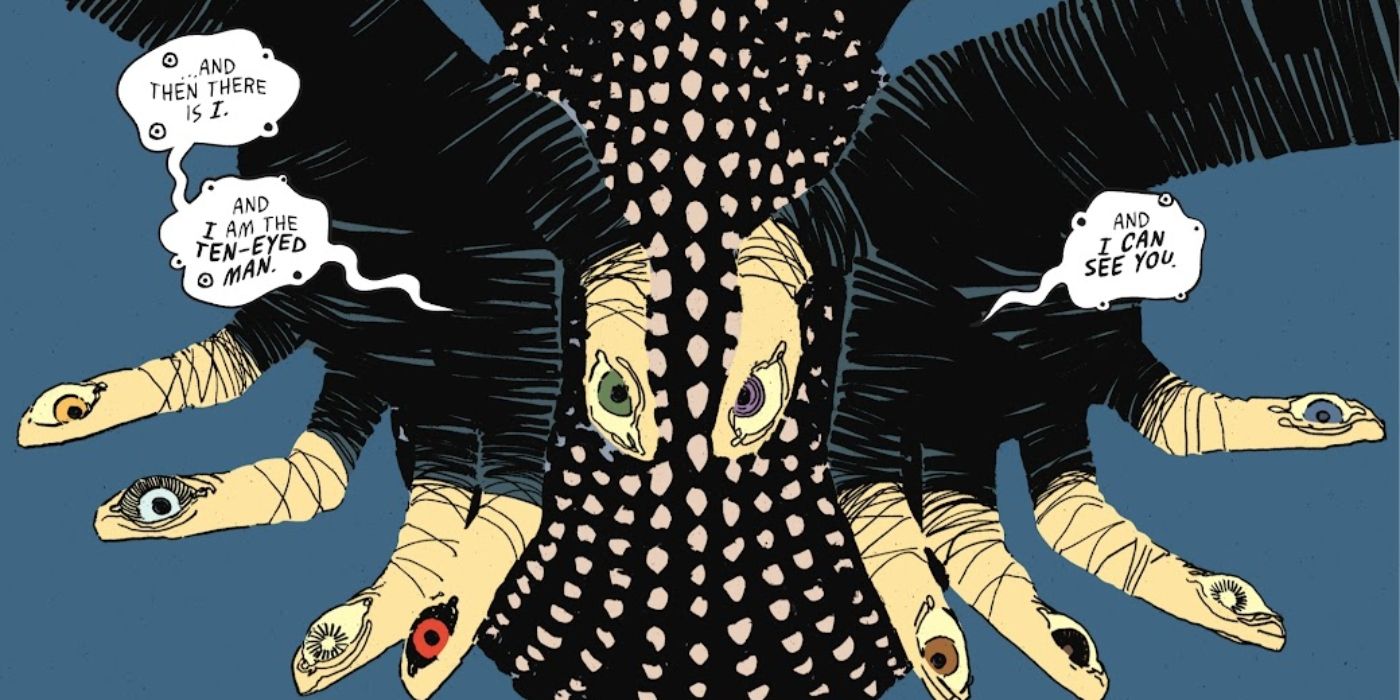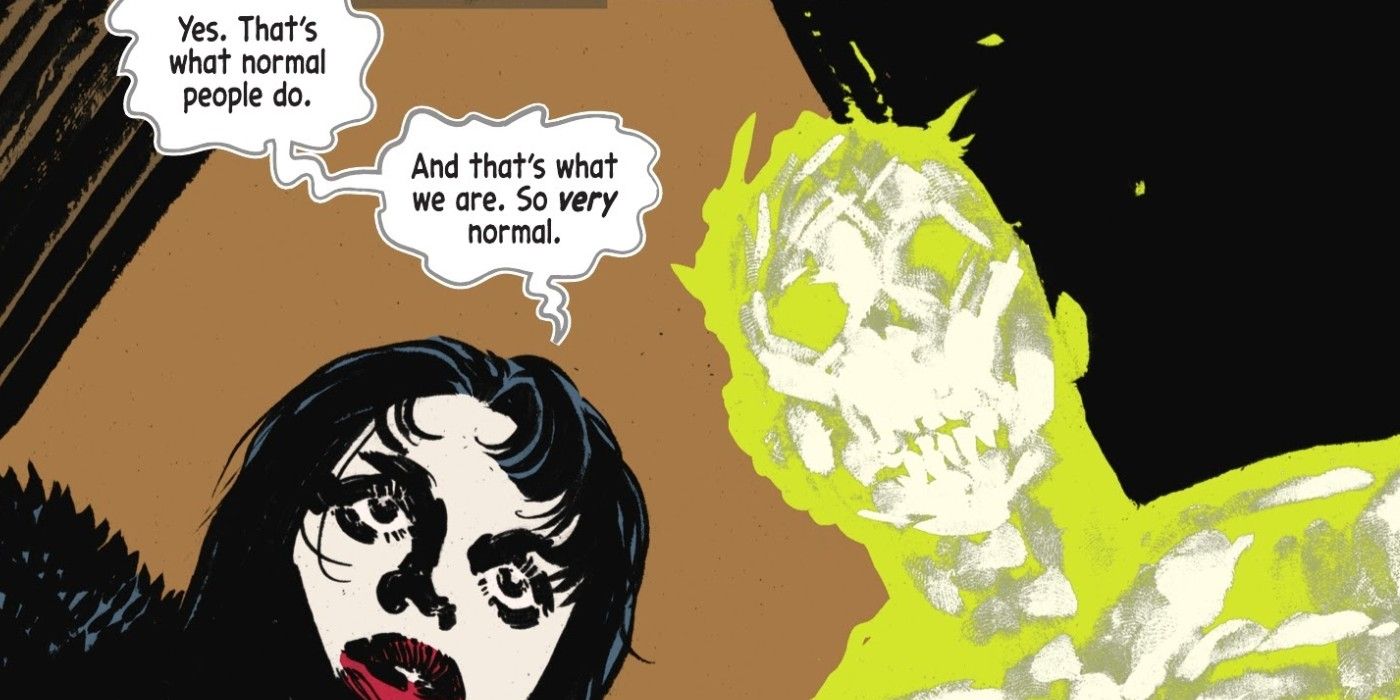Table of Contents
An Arkham Asylum series took a very serious look at behavioral health care and painted the members of Batman’s Rogues Gallery in a new light.
A Batman-adjacent miniseries about Arkham Asylum offers a critical look at behavioral health/psychiatric treatment. Arkham City: The Order of the World (by Dan Watters and Dani Strips) dedicates panels to journal entries of Dr. Jacosta Joy, as she struggles with the ambiguity of psychiatry. Watters’ Arkhamites (known to Gotham as dangerous supervillains) are recast as unfortunate people deserving of compassionate care. The Asylum and Gotham City become metaphors used to illuminate flaws in the system for treating behavioral disorders.
The series’ general perspective on psychiatric institutions is humanity lacks a fundamental understanding of insanity. Thus, places such as Arkham Asylum are inherently flawed. While Joy’s patients try to survive the accepted social order outside the Asylum, rumors suggest Batman is dead. Even worse, there is fear toxin in the water supply. The collective efforts of the creative team emphasize ambiguity regarding sanity and the frailty of the human mind. The series is an exercise in psychological methodologies. In particular, multiple perspectives from vastly different characters feature throughout.
Doctor Jacosta Joy Takes on Gotham’s Behavioral Health Complex
Ther mini-series also picks up on loose threads from the Joker’s A-Day attack. Joy searches Gotham for her patients displaced by the destruction. The enigmatic Ten-Eyed Man has a hand in helping Joy locate several of her patients. Batman’s absence is a boon to the story’s main message: his vigilantism would be antithetical to Joy’s empathic quest to care for and protect Arkham’s most notorious inmates.
Dr. Joy claims psychology has made great intellectual leaps. Her multi-panel musings invoke insights from the most recent literature in psychology circles. She suggests that Arkham Asylum is a metaphor for language. The Asylum must be leveled for good or reinvented and rebuilt, much like the language used to talk about treating misbehavior. Medical jargon has changed drastically from lunatic to mentally ill, from the madhouse to the hospital. The lobotomy is side-lined for shock treatments. Despite this flux, some things remain constant, like society’s will to isolate the mentally ill and the social habit of recoiling from insanity like it’s infectious. She argues facilities that hold the mentally ill separate from the rest of society continue to fail because judging sanity is a subjective art.
Most of Arkham’s Inmates Just Want to Live Peacefully
Watters and Dani combine original characters with established Batman villains, choosing Arkhamites with demeanors and psychiatric struggles that deepen the intrigue. Their genius lies in how they garner empathy for these strange heroes while still preserving their most disturbing attributes. Nocturna and Dr. Phosphorous, for instance, acquire an apartment and aspire to live ‘like normal people’. The Doctor’s radioactive body, however, gradually poisons their next-door neighbors. Even after learning about their neighbors’ symptoms (hair and teeth falling out, skin lesions), the couple fails to realize they’ve caused the macabre scene. Nocturna, a vampire opts for pig’s blood, noting normal people live off animals. Batman’s enemy, the Ten-Eyed Man, cloisters himself, procuring occult information from his ‘rituals’. Dr. Double X is discovered chained up in the basement as a drug dealer harvests and sells ‘hits’ of energy from his energy duplicate.
Some of Arkham’s inmates are harder to feel empathyt for but they certainly add to the horrific arc of the series. For example, Professor Pyg still strikes fear but his role in the series takes a turn when he tries to change the minds of his cohorts instead of their faces. Pyg enlists Dr. Joy to help him run an institution where there are no locks on doors and no tranquilizers. Pyg and Dr. No Face devise clever ways of either giving each of their patients a problem to solve or helping find an effective solution to their suffering. They comfort Double X with a simple hand mirror, so he still has a twin to look upon when he’s separated from his astral double. Meanwhile, Mad Hatter is encouraged to search for codes in the static of a defunct television set.
Spinning Arkham as Gotham City’s metaphorical Doppelgänger is Watters’ way to further illustrate the subjectivity to ‘the order of the world’. Superimposing a blueprint of the Asylum over a map of Gotham, Ten-Eyed Man correctly locates those missing. Joy discovers her patients’ locations in Gotham City spaces correspond to their regular haunts within the institution. Joy finds this order collapses once she’s caught up in how her patients make sense of things; unfortunately for her, there is a magnetism to madness’ and she’s overcome by the ‘new order’ with tragic consequences.
Dani’s Style Is Unhinged, Adding to a Frenzied Narrative
Dani’s art makes the series even better. There’s a visceral quality to her work. Her aptitude for sculpture is clearly expressed through her inky etchings. She carves her characters, playing with negative/positive space. Dave Stewart (Hellboy) is the perfect choice for coloring. Stewart instinctively uses a palette that fits the tense, heavy atmosphere Dani’s of illustrations. This story is all about duality and divergence, and Dani’s style proves a keen contributor to that notion. Her hair-raising artwork nurtures a nagging apprehension that makes the reader feel drunk on Gotham City’s toxic tap water.
Readers are not given definitive solutions to the problem of healing people averse to following ‘the order of the world’. Arkham City, at its core, offers only a thought experiment. The very nature of psychology is put into question. The reader is forced to wonder if behavioral health care, despite all its advances, can truly heal minds. Watters and Dani want the reader to feel discomfort while contemplating this serious societal issue. The finished storyline satisfies the senses with this electrifying portrayal of Gotham and Arkham and is worth revisiting.




More Stories
Thoughts as of late: on evolving, growing & that tiny voice inside
County Health Officials Report 17% Increase in Tuberculosis Cases
10 Most Nutrient-Rich Foods To Include In Your Diet